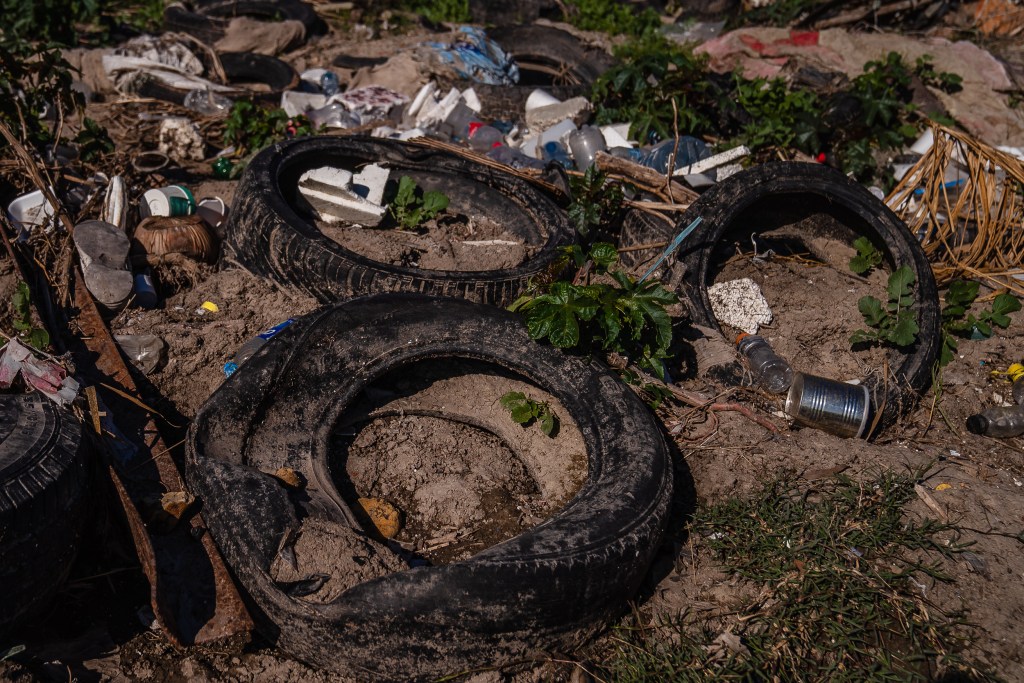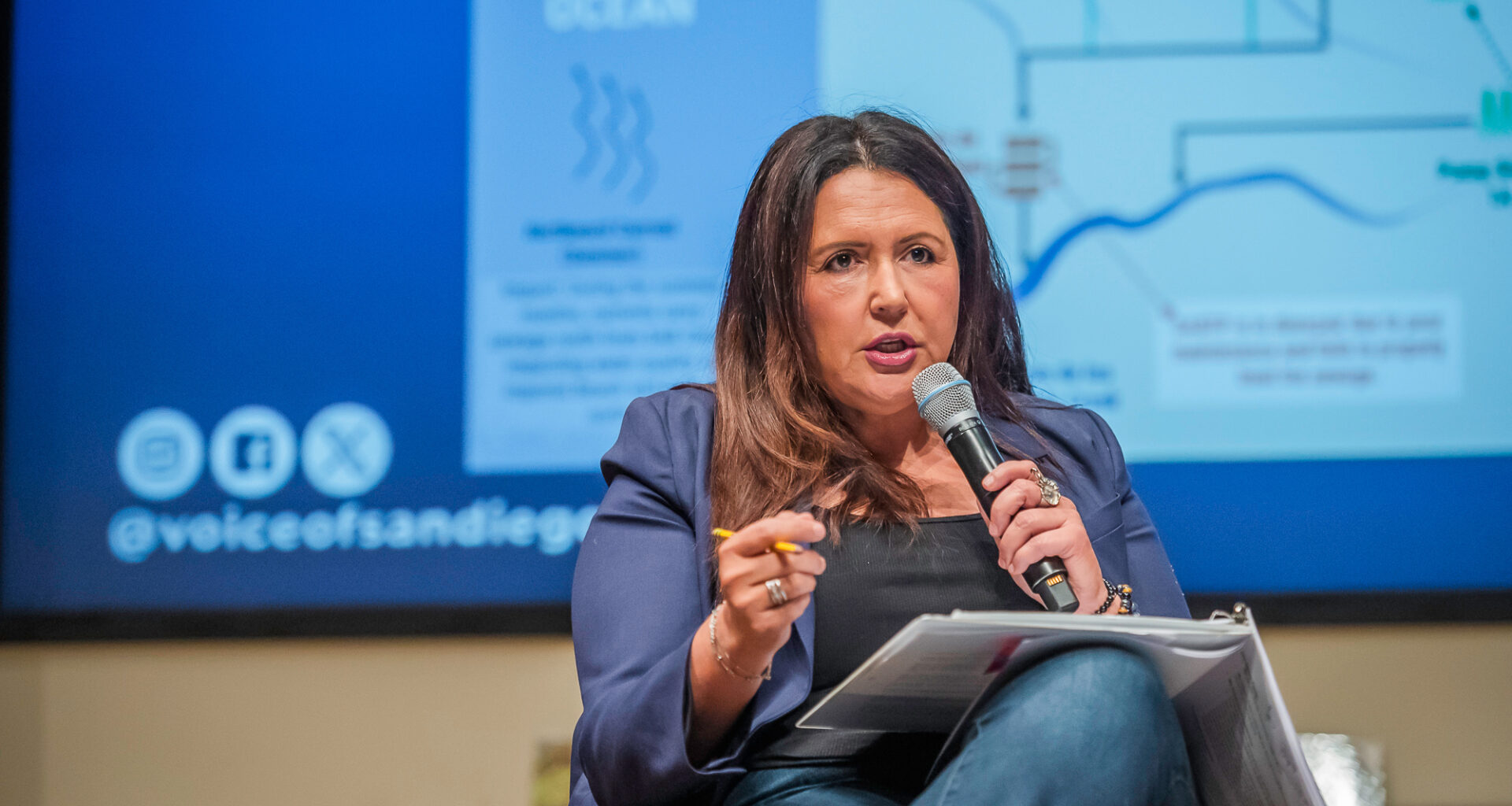Nora Vargas said when Greg Cox departed from the San Diego County Board of Supervisors, he left behind a list of pending work to bolster South Bay’s public parks system.
Vargas, now the board’s chair and south San Diego’s representative, said she took a look at that list and realized not much had been done to help communities in South Bay’s southwestern communities. ‘Lo, the “Gateway to the Californias” regional park concept was born. And Vargas is trying to protect the land she’s eyeing for the project from becoming designated as a Superfund hazardous waste site.
Supervisor Terra Lawson-Remer told me she’s submitted a Superfund request for the Tijuana River Valley along with around 500 public testimonies about the pollution to the U.S. Environmental Protection Agency. It’s not clear right now how much of the vast Tijuana River Valley could potentially be considered under such a designation. The EPA would do some soil, water and potentially air testing first. But the final map could overlap with areas Vargas’ staked out for her parks project.
Last month, and with the help of her Republican colleagues, Vargas stalled a decision to designate a swath of land where Mexican sewage spills over the border into San Diego as a Superfund site. Traditionally reserved for the nation’s dirtiest and abandoned industrial waste lands, some in South Bay feel a Superfund designation in the Tijuana River estuary would trigger more and faster federal support getting it cleaned up.
At the time, Vargas said the county needed more time to understand all the legal and property value ramifications pursuing Superfund status could entail. But sources told me they thought Vargas stalled because she didn’t want to jeopardize a project she unveiled during her State of the County address in February.
“For decades, the beauty of the Tijuana River Valley Regional Park has been reduced to the transboundary pollution crisis. While the County will continue working to solve the cross-border sewage pollution and mitigate its impact on ocean waters, creating a regional active recreation space for its adjacent communities will breathe new life into the area,” Vargas said then.
I asked Vargas to clarify in late October. Does that Superfund designation affect the Gateways project, I asked.
“I think it does,” she said.
Lawson-Remer is pursuing the Superfund designation anyway with the backing of Imperial Beach, one of the communities most affected by the cross-border pollution. Varagas’ split from supporting Superfund added fuel to the ongoing feud heating up between Imperial Beach Mayor Paloma Aguirre and Vargas, according to our South Bay reporter Jim Hinch. The Imperial Beach Democratic Club, chaired by Aguirre, took the symbolic step of rescinding its endorsement of Vargas in her re-election race she handedly won.
In a statement Monday, Aguirre backpedaled a bit and commended Vargas for her efforts to enhance recreation in “park poor” South County. But she has sent her own letter to President Biden suggesting a Superfund designation for the valley.
From Pollution to Tourist Hub? Tires and trash in the Tijuana River Valley on Dec. 20, 2022. / Photo by Ariana Drehsler
Tires and trash in the Tijuana River Valley on Dec. 20, 2022. / Photo by Ariana Drehsler
The county of San Diego owns most of the 1,800-acre Tijuana River Valley Regional Park. Much of it is contaminated by its sewage-laden namesake river. Trash like shoes, plastic bottles, car tires, even whole kitchen appliances, flow over the border in its waters and ensnare among overgrown trees, shrubs and scrub that hide the river’s banks. There’s a lot of clean up work to be done there.
Vargas’ Gateway project includes the county applying for $20 million from President Joe Biden’s $2 billion Inflation Reduction Act or IRA. The county’s board, with Vargas’ influence, also committed $500,000 in county money for a contract with San Diego Tijuana World Design Capital for a sports and recreation complex near the Otay Mesa and Nestor communities. The project is supposed to make the area a tourist attraction replete with “artful arches” representing the meeting of California and Baja California at the U.S.-Mexico border, according to a board letter.
Lawson-Remer voted against that contract because it was with a single source, meaning it wasn’t a competitive bidding process which is what most governments do.
Mayor Aguirre spoke against the project at the board’s June 5 meeting. The Imperial Beach Democratic Club spokesperson told Hinch the project “is a great idea, but there are a lot more pressing needs.”
Vargas told me the bulk of that $20 million from the IRA would be spent on removing trash and sediment from the river park area and help restore native plants. Another $6 million would help build a new community space at the YMCA Camp S.U.R.F. located in Imperial Beach and hub for staging emergency services during a flood or fire.
It’s still unclear whether the feds will agree to Superfund status for the Tijuana River. Everyone I’ve talked to with expertise on the matter say it’s a longshot. Maybe the Gateways project would secure a large chunk of federal money to do some serious clean-up. But whether it’s enough, and whether it’s worth trying to transform contaminated land into a park remains to be seen.
In Other NewsOrganisms in sewage pollution are fighting with fish and plant life for oxygen in the Tijuana River, reports Tammy Murga at the Union-Tribune. The Tijuana River estuary is one of the few intact salt marshes remaining in Southern California. More than 90 percent of these wetlands have been lost to development.
San Diego fishermen deliver over 1,000 pounds of fresh local seafood to the region’s food banks each month. (Axios)
Here’s a dozen zero-waste tips to guide you through your holiday, like using reusable bags (not reusable plastic because there is no such thing) while shopping for gifts. (CBS 8)
The ecological impact of a housing crisis: Volunteers collected 155,000 pounds of debris from an encampment along the San Diego River. That included whole makeshift homes, some that were two stories or had a fireplace. (Union-Tribune)
Crystal Niebla braved a pair of rollerskates (I will not) to report that San Diego Association of Governments is incentivizing businesses to encourage employees to use public transit or bicycle by providing employee subsidies to cover those costs. (inewsource)
Another “doomsday fish,” a harbinger of earthquakes, washed ashore at Grandview Beach this month. That’s two so far this year. No word on whether the earth has or will quake. (Scripps Institution of Oceanography)
Soon-to-be-president-again Donald Trump appointed an oil industry exec as his energy secretary nominee. Chris Wright is the founder and CEO of Liberty Energy, an oilfield services firm based in Denver. He’s expected to support Trump’s plan to maximize oil and gas production, the use of which are the main culprits of climate change. Very fun. (Reuters)
In other fun global warming news, 2024 is probably going to be the warmest year on record, according to the Copernicus Climate Change Service. (USA Today)
In actually fun news, a critically endangered blue-billed curassow mother gave birth to a chick at the San Diego Zoo this month.
The previously dismantled Balboa Park Botanical Building is making headway on its glow-up. (City of San Diego)
Artificial light harms the sleep patterns of bees, reports Thomas Fudge of KPBS.
Californians can get a $8,000 rebate (around 40 percent off) for buying an electric heat pump which will help the state reach its decarbonization goals in the long run. (Union-Tribune)
